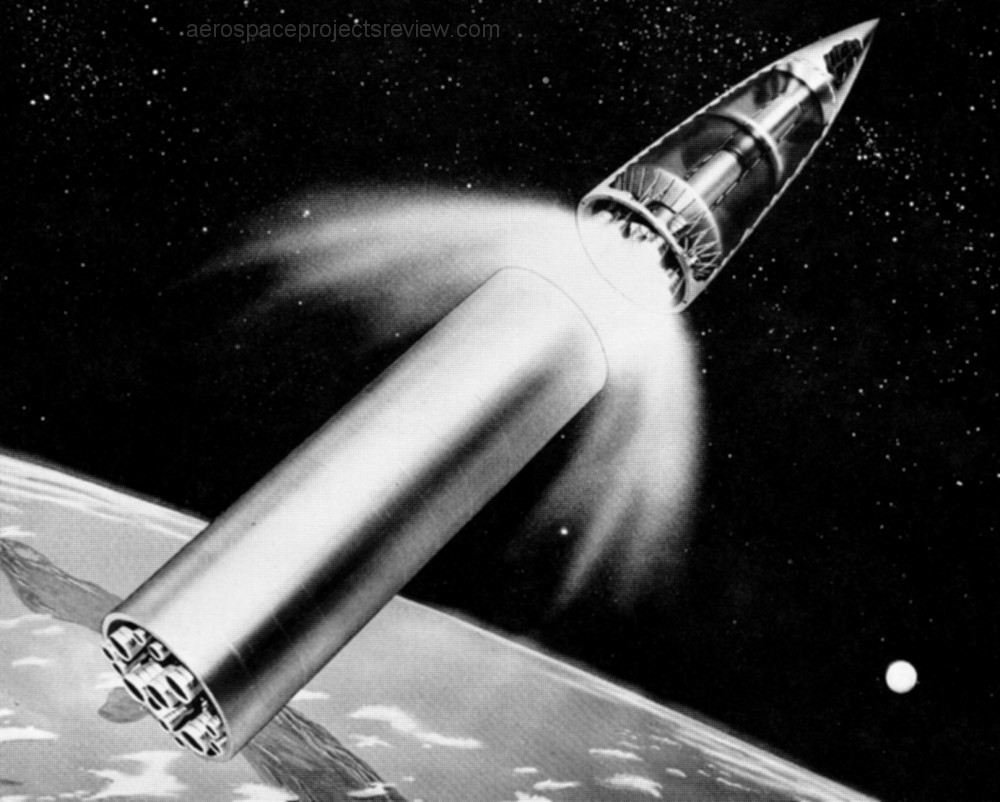Artwork of a three-stage rocket designed by Krafft Ehricke around 1953. 126 feet tall, it would be capable of orbiting 11,000 pounds of payload into a 600 mile circular orbit. Liftoff weight would be 1.3 million pounds.
The first stage, here being shown dropped, would be parachute recovered. the second stage would be expended; the third stage would be used to built up a space station. If you can’t immediately tell where stage 2 ends and stage 3 begins, it’s because stage 3 is the central cylinder, with stage 2 being wrapped around it. This sort of staging arrangement was considered fairly often in the days before they actually had to build these things.
It would be able to land 3,000 pounds on the moon or shoot 5,000 pound probes past Mars or Venus.
